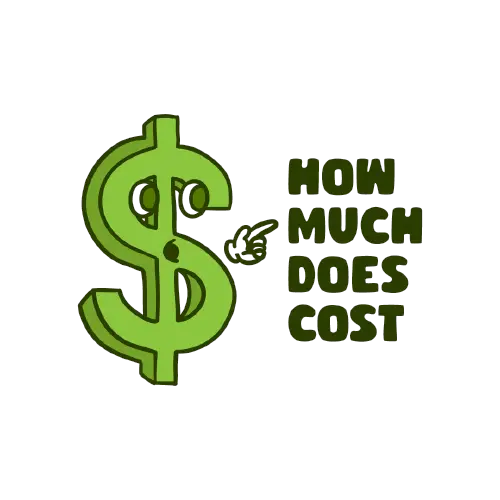We all know and love the iconic style of a sapphire. Ever since Princess Diana stepped out on the scene with a massive 12-carat oval cut sapphire engagement ring the modern world has had a soft spot in their hearts for sapphires that has lasted decades.
For many of these people who love sapphires and might want one for themselves someday, the same question comes across their minds, “How much is a sapphire?” The answer to this question isn’t as simple as most people would think.
Even though there are a lot of sapphires of different sizes, colors, and quality it’s safe to say that you want the best of both worlds regarding quality and cost.
Table of Contents
How much does a sapphire cost?
A 1-carat blue sapphire ranges anywhere from $500-1,500 depending on quality. This isn’t that bad considering that a 1-carat diamond ranges anywhere from $1,800 -12,000. If you’re looking for the middle ground for sapphires then expect to pay $400-600 per carat on average for a standard-quality blue sapphire.
When it comes to choosing most stones, not just sapphires, there’s a lot to consider. You might know them as the 4 Cs; Cut, Color, Clarity, and Carat. With the 4 Cs, gems have their own uniqueness that makes them more or less valuable.
Sapphire cost by color
A sapphire that is 4 carats and a deep blue, or ‘true blue’, the most valuable color, will cost a lot more than a 4 carat that is green in color, which is least valuable.
Sapphire cost by location
Sapphires also are more valuable depending on the location from which they are mined, or in some cases not mined.
Sapphires from Kashmir start at $5,000 for 1-carat and only go up from there. Check out this antique Tiffany & Co. Kashmir ring.
They are not only incredibly rare since they are typically no longer mined but are also considered to be the “perfect example” of a sapphire. Other rare sapphires are from Burma, Ceylon, and Sri Lanka.
Consideration to do before purchasing a sapphire
When shopping for sapphire many people have a sticker shock when looking at a natural sapphire, especially when compared to a lab-made sapphire.
Lab-made sapphires are real sapphires, as they are the same chemically. In fact, lab-made sapphires have little-to-no flaws, while naturally, mined sapphires do.
While you might think your sapphire having no flaws is a good thing, it actually isn’t.
Many gemologists use the flawlessness of lab-made sapphires to sort out which stones are real and which aren’t.
The phrase “to err is human” comes to mind when explaining why it isn’t so great when a sapphire is too perfect.
The flaws that natural stones have are what make them unique. Only that stone has that particular flaw, no other, thus proving that it is a natural stone as stones made in nature are always flawed in some way.
Should I buy a real or lab-made sapphire?
According to Hong Kong jewelry designer Edmond Chin, “It’s about rarity – naturally flawless gems are exceptional and scarce and therefore, like all hard-to-find things, remain the most desired and valuable objects.” So, the question many of you are thinking is, “Should I buy a real or lab-made sapphire?” To that I would say, buy a real one, IF you can afford it.
There is nothing like the real thing, not just in value but also for your own peace of mind. If you can’t afford it, then I would get the lab-made stone. It is real and if you want to upgrade when you can afford it then replacing the stone should be no problem.
Now that we’ve sorted out if you’re going to buy a natural or lab-made ring we need to get down to specifics, which are cut and color.
I personally love this part as it’s less about the numbers and more about what you really want in your jewelry.
Sapphires cost by cut
Sapphires typically come in oval, round, cushion, and emerald cuts. This gives a lot of wiggle room for what you can get in your stone and even if you specifically want a pear or marquise cut I’m sure you can find one. Just check out this Brillant Earth pear-shaped sapphire from Sri Lanka (I guarantee you it’s worth a pretty penny though because of its rarity for shape and origin location).
Which color sapphire is the most expensive?
The color of the sapphire is probably the most important part in selecting a sapphire, purely because sapphires are infamous for their deep blue hues and the value of a sapphire drastically goes up or down based on this.
Your sapphire can (and probably will) have hints of other colors in them, like violet, but as I said before the more green your sapphire has in it the lower the value will be.
Better to get an emerald than a green sapphire! Other sapphire colors are pink, yellow, white, and Padparadscha, which is a mixture of pink and orange and is incredibly rare.
Pink sapphires have been climbing in popularity as they have an incredibly vibrant pink color and really make a statement.
Yellow sapphires have always been one of the most popular gemstone choices as they resemble a yellow diamond but are much more affordable.
Is a sapphire more expensive than a diamond?
A 1-carat yellow diamond is sold for around $8,000 which the same carat yellow sapphire is only $500. Padparadscha sapphires are some of the rarest gems in the world and in a league of their own.
Which explains why their price tag ranges from $6,000 to $12,500 per carat. They only are found in Sri Lanka and their unique orange and pink colors are unique to this particular gem, making them very sought after by the world’s rich. In fact, Princess Eugenie was proposed to with a stunning Padparadscha sapphire and diamond ring, and if it’s good enough for the Queen of England’s granddaughter then it’s good enough for me.
Having a sapphire in your jewelry collection is something that many dream of. However, if you’re going to make such an expensive decision then you need to thoroughly research what you want and what you can afford. If you walk into a jewelry store and don’t have a clear idea of what you want then you very well might end up walking out with something that isn’t worth what you think it is.
Conclusion
Having a good idea of what carat, color, clarity, and cut you want, as well as the maximum amount you’re willing to spend on the stone, is crucial. Once the jeweler knows you’ve done your research they will show you options within your budget, just make sure that you are flexible to that budget. The jeweler might have exactly what you want in carat, clarity, and color, but it might be in a different cut, so being willing to compromise on lesser things like this could very well have you walking out with a high-quality stone for a reasonable price.

